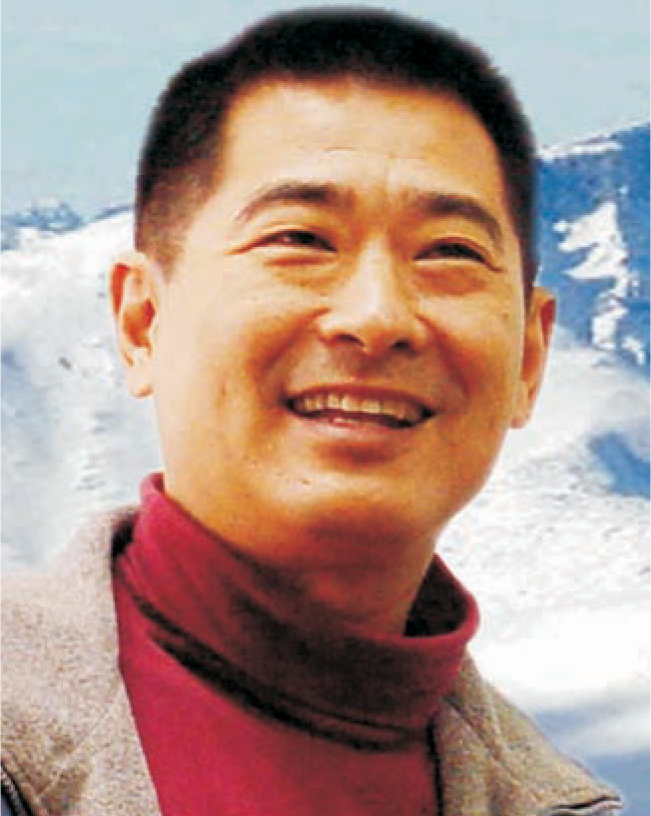Darwin Chang
DOI: 10.1063/1.2218566
Darwin Chang, a prominent theoretical physicist, succumbed to stomach cancer on 29 December 2005 in Taipei, Taiwan.
Darwin was born on 29 June 1954 in Taichung, Taiwan. After undergraduate study in physics at National Taiwan University, he received his PhD in particle theory from Carnegie Mellon University in 1983 under one of us (Wolfenstein). His creativity, productivity, and passion for physics were already apparent at Carnegie Mellon. He worked so quickly and independently after discussing an idea with Wolfenstein that the two somehow never published together. A paper he authored by himself on spontaneous CP violation is well cited.
In 1983 Darwin moved to the University of Maryland in College Park as a postdoc, and he flourished there. In just three years, he published with Rabindra Mohapatra and others more than 30 papers on left–right models, SO(10) grand unification, neutrino physics, and numerous other topics. In the words of Mohapatra, “It was so much fun and so stimulating to discuss physics with Darwin. He was not only an extremely insightful physicist, but he was among the hardest-working and [most] brilliant collaborators that I have known in my lifetime.”
Darwin joined the faculty of Northwestern University in 1986, and in 1987 he received the Outstanding Junior Investigator award from the US Department of Energy. He soon started a lifelong collaboration with one of us (Keung) in which we produced nearly 50 publications.
In 1993 Darwin became a professor of physics at National Tsing-Hua University in Hsinchu, Taiwan. He continued to expand his research interests, which eventually encompassed hyperon weak decay, top-quark spin and CP violation, sand piles, black holes, and even d-wave superconductivity. In one notable work with Keung and Apostolos Pilaftsis, he found new two-loop contributions to electric dipole moments, a result that provided one of the most stringent constraints on supersymmetric models.
Darwin was a strong force behind the promotion of fundamental science research in Taiwan. He served as president of the Physical Society of the Republic of China and was instrumental in the establishment of the National Center for Theoretical Sciences in 1997. He set up successful exchange programs between NCTS and other high-energy physics labs, including KEK in Japan, and served as the director of the NCTS physics division in 2004.
Open, honest, and down to earth, Darwin could also be critical in discussions. He always managed a cheerful smile and had a hallmark laugh. His energy and passion for physics was reflected in his skiing style: Regardless of obstacles, charge! Everything under the sun was physics for him; the only question he asked was, Is it interesting? Curiosity was a key word in his life, and adventure took the highest priority. He loved teaching and took great care of his students. Even during his final months, he tried hard to spend time with them. His presence and insightful comments were always stimulating at seminars. A week before his death, one of us heard him say as he lay in the hospital, “Oh, if I could just go to a seminar. …”
Darwin’s interests extended to music, sports (swimming and skiing), and poetry. It is fitting to close with a few of his verses:
All my life,
I’ve been trying to find,
after every beautiful soul I encountered,
after every unfulfilling dream I blundered,
a joyful peace in my human weakness,
to accompany me to my willing decease.
All my life,
I’ve been trying to find,
after every beautiful soul I encountered,
after every unfulfilling dream I blundered,
a joyful peace in my human weakness,
to accompany me to my willing decease.
His decease may not have been willing, but he has now attained eternal peace.

Darwin Chang

More about the Authors
Hai-Yang Cheng. 1 Academia Sinica, Taipei, Taiwan .
George W. S. Hou. 2 National Taiwan University, Taipei.
Wai-Yee Keung. 3 University of Illinois, Chicago, US .
Lincoln Wolfenstein. 4 Carnegie Mellon University, Pittsburgh, Pennsylvania, US .
